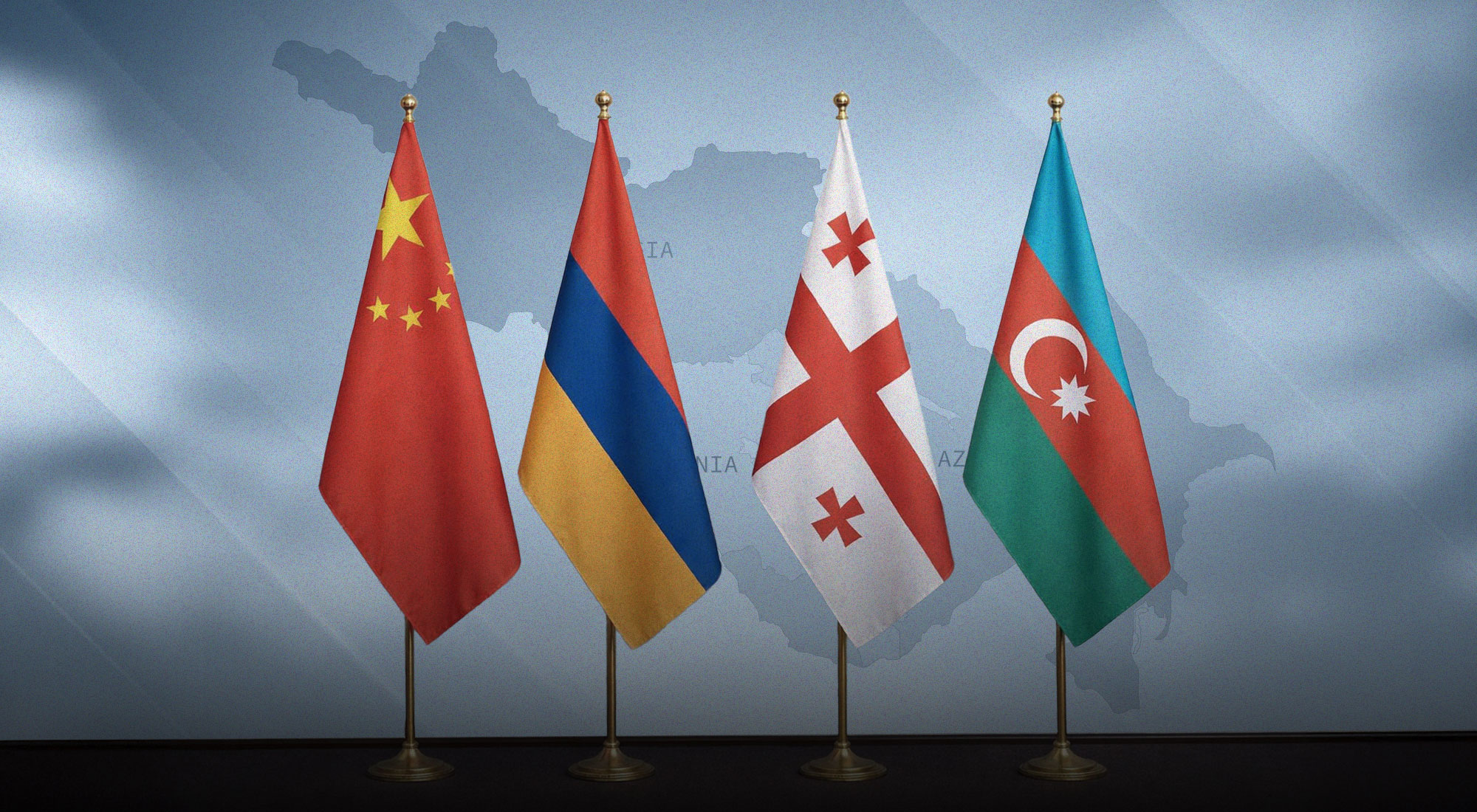China and Kenya have a long history of trade, with archaeological discoveries showing that goods were exchanged alongside the Kenyan coast as far back as 600 years ago. In 1963, Kenya gained its sovereignty from the United Kingdom but maintained both economic and political relations with Europe, the United States, and several African countries.[1] In the last two decades, however, China has actively engaged with African countries, many of whom have welcomed China and hailed its Belt and Road Initiative[2] initiative as a model for developing countries. The West sees China’s plans otherwise, with some even characterizing the Sino-African relationship as a form of “neo-colonialism.”[3]
The desire to access markets for natural resources underpinned both historical European and Chinese policies towards Africa.This paper will examine the economic and political initiatives China has implemented or plans to implement in Kenya. Will they help Kenya flourish or do they only serve China’s aspirations? How is Kenya dealing with the challenges that come along with China’s approach?
The seeds of collaboration: The history of China and Kenya
In order to have a comprehensive outlook of Chinese-Kenyan relations, we need to understand the initial stages of the political and economic interactions between them. Their relationship dates back to Zhang He, a Chinese sailor and emissary,[4] who led a trade fleet to Mombasa in 1572. Since then, the two parties have a shared history of friendship that has lasted into modern times, according to the Chinese State Councilor and Foreign Minister Wang Yi.[5]
Trade between the two countries before Kenya’s independence can be divided into two distinct periods: the colonial era, when Kenya was ruled by the British Empire, and the Cold War era. British settlers in Kenya instituted economic policies such as land alienation for European settlers, African taxation, and forced labor for Kenyans who worked in agriculture. Local markets were turned over to settlers of the British Empire to run.[6] In the 1950s and 1960s, Kenya exported raw materials such as pyrethrum, sisal, and cotton to China, where it was re-processed; in return, Kenya imported from China semi-processed and finished products.[7] It was during this era that the two countries realized they shared a political history, with China and other African countries facing the same trauma from colonization. This led to the development of a shared solidarity between them.[8]
China has become a major partner with many African countries, and this has had a significant impact on these countries. The policies that have influenced the relationship were crafted at two significant public summits: the Bandung Conference[9] on 19 April 1955, and the Forum on China-Africa Cooperation (FOCAC)[10] in 2006 The Bandung conference aimed to create a non-aligned movement among former colonies in Asia and Africa with participating nations including China agreeing to focus on domestic economic development without siding with capitalist or socialist camps.[11] At FOCAC, Beijing hosted 48 delegations from Africa, who collaborated on the initial stages of economic and social development projects.[12] These forums deepened China’s relationship with Africa and shaped their future foreign policy agenda.
The pros and cons of trade with China
In 2014, Nkosazana Dlamini Zuma, the chair of the African Union Commission, summed up one of the continent’s main goals thusly: “[Our] dream [is] that one day the capitals of all African countries will be linked by high-speed railways.” Kenya shares this ambition, but like much of Africa, they lack a financial structure strong enough to realize this goal. This is where China comes in. “As a good friend of Africa, China is willing to make efforts to help African friends realize [their] dream,”[13] said Mr. Yi in response to Zuma’s statement.
Kenya’s geopolitical location makes it crucial to China, who needs to secure the commercial ships moving goods and raw materials to the Chinese mainland. China has also applied its “going out policy,” which encourages Chinese firms to invest outside of the country, to its relations with many African countries including Kenya.[14] In 2019, Kenya became a net importer from China with a trade deficit of $3.4 billion.[15] Rails and railway parts, and data processing and communication devices, make up 15% of this total. In the past five years, Kenya exported vegetable textile fibre, petroleum oil, animal skin, sesamum seed, and black tea to China.
Despite the active trade between the two parties, however, some observers see China as a donor rather than a partner.[16] According to an article in The Conversation, the railroads cost Kenya US$3.8 billion, which is considered the biggest infrastructure expenditure in the country’s history.[17] On top of this large debt burden, Kenya has not seen the economic benefits it expected from the partnership with China. Its industrial sector has failed to develop as expected, and GDP has fallen short of projections despite Kenya’s position as a leading African nation in terms of industry, especially during the post-colonial era.
That is not to say Kenya has not benefited from their ties with China. Jobs have been created in new sectors, including over 2,200 jobs in Chinese companies. According to a survey conducted by the Sino Africa Centre of Excellence Foundation, 63% of these employees hired by Chinese companies are Kenyan nationals. Kenya has also become a competitive market for both local and foreign investors, and this economic activity has expanded its tax base, increased local manufacturing, and made Kenya part of the global market.[18] Although China exports plenty of goods to Kenya that are considered cheap, Kenyan consumers continue to buy local goods.[19]
In the middle of two rivals: China, Kenya, and the U.S.
Kenya seeks to balance their national interests between the U.S. and China. When U.S. President Barack Obama visited in 2015, President Uhuru Kenyatta stressed Kenya’s openness to constructive engagement with all countries, but during his second state visit to China on 19 September 2018, Kenyatta affirmed his country’s commitment to an “interconnected world [through the Belt and Road Initiative].”[20]
Kenya has amicable relations with Washington.[21] In the financial year 2020, the U.S. supported Kenya with $560 million for security and peace missions and has agreed to sell Nairobi $139 million-worth of military hardware over the next three years. The U.S. has also deployed military troops to counter the al-Shabaab terrorist group, which is based in Somalia but has spilled over the border into eastern Kenya.[22] An additional $600 million in financing from the U.S. has gone to clean energy projects in Kenya; this accounts for 20% of the country’s total clean energy.[23]
The situation becomes complicated, however, when it comes to China’s clout in Kenya. According to some U.S. officials, China’s has ulterior motives in Kenya that go beyond an economic partnership. Specifically, they are worried about the potential military presence of the People’s Liberation Army,[24] which “projects and sustains military power at greater distances,” according to the Pentagon.[25]
There are also concerns about China depleting Kenya’s natural resources.[26] Both countries have seen rapid increases in population and must provide for these people. In Kenya, only 18% of the land is suitable for agriculture as the country becomes more and more urbanized. Coupled with their 2.2% rate of population growth and total of 56.6 million people, [27] there is a real food security challenge that might require Nairobi to redistribute these resources to meet domestic requirements rather than exporting them to China.[28] Kenya has developed and initiated its strategy to counter its resource challenges,[29] but any change to the structure of its economy could cause a major shift in relations with China.
The ramifications of natural resource depletion[30] are being felt worldwide, so China and Kenya are not alone on this issue. The global community is already seeing shifts in terms of allies and partners based on natural resource security. Hungary, for example, broke with the European Union over sanctioning Russian over their attack on Ukraine, citing its duty to supply the Hungarian people with natural gas.[31]
Did Kenya read the fine print? Contractual issues with China
One of the objectives of the Belt and Road Initiative is an active flow of movement of goods and people. To achieve this, China has invested in several railroads and ports that link Africa’s inner cities with seaports. China has been criticised, however, over the ambiguous terms and conditions in their major project agreements, including some in Eastern Africa. In Tanzania, for example, President Jakaya Kikwete and President Xi signed an agreement in 2013 to build a port with the capacity to handle 20 million containers annually. China Merchants Holdings companies oversaw the project with EXIM bank, which oversees projects beyond China’s borders, in charge of financing. The agreement was cancelled by Kikwete’s successor, President John Magufuli, who cited problematic clauses for his decision: “Those investors are coming with tough conditions that can only be accepted by mad people.” Kenya faced a similar issue with Standard Gauge Railroads. Under pressure to reform his country’s economy, Kenyatta agreed to allow Chinese firms to finance the infrastructure project. The Kenyan Supreme Court, however, ruled that many of the agreement’s clauses were not competitive or transparent.[32]
The Supreme Court ruling notwithstanding, the Kenyan government seemed to be satisfied in its dealings with China. The presidential election of William Ruto in August of 2022, however, might change that. During the campaign, Ruto vowed to deport Chinese nationals and to publicize governmental contracts with Beijing,[33] potentially throwing relations between the two countries into peril.
Conclusion
Kenya is one of the most important countries in east Africa because of its location and raw materials. China sees Kenya as a long-term ally since they mutually benefit from each other economically and politically. However, Kenya also receives aid from the U.S. and therefore must balance its ties with both rival powers.
The country faces significant economic problems. The national debt as of 2021 was $71 million, up from $16 billion in 2013. Complicating matters is that this debt is measured in U.S. dollars, yet the Kenyan shilling has fallen, hitting an all-time low on August 26 2022.[34] Kenya’s significant human and natural resources represent a chance for the country to prevent future problems. The Belt and Road Initiative could be lucrative; however, before any benefits can be reaped from the partnership, Kenya must address issues regarding its contracts with China.
References
[1] Miriam Omolo, Stephen Jairo, and Dr. Ruth Wanja, Comparative Study of Kenya US, EU and China Trade and Investment Relations (Nairobi: Institute of Economic Affairs, 2016), http://bitly.ws/v5uN.
[2] China’s Belt and Road Initiative (BRI) development strategy aims to build connectivity and co-operation across six main economic corridors encompassing China, Mongolia, Russia, Eurasia, Central and West Asia, Pakistan, Indochina, and other countries of the Indian sub-continent. See “The Belt and Road Initiative in the Global Trade, Investment and Finance Landscape,” in OECD Business and Finance Outlook 2018 (Paris: OECD Publishing, 2018), https://doi.org/10.1787/bus_fin_out-2018-6-en.
[3] Natasha Menell, “China And Africa: The New Neocolonialism?” Focus, vol. 58 (September 2010), Helen Suzman Foundation, http://bitly.ws/v5tN.
[4] Edward L. Dreyer, Zheng He – China and the Oceans in the Early Ming Dynasty: 1405 -1433 (New York: Pearson Longman, 2007).
[5] “Chinese, Kenyan FMs Meet over Bilateral Ties, Cooperation,” Xinhua News Agency, 7 January 2022, http://bitly.ws/v5tE.
[6] Peter O. Nedge, Colonialism and Its Legacies in Kenya, Lecture delivered during Fulbright-Hays project abroad program, 6 August 2009, p. 5, https://bit.ly/3MIZnrt.
[7] John Paul Mokua Mogeni, “The Implementation of Chinese Foreign Policy Goals on Kenya’s Manufacturing Sector: 2000-2018,” (M.A. Thesis, United States Interntional University-Africa, 2020), http://bitly.ws/v5tB.
[8] Yun Sun, “Africa in China’s Foreign Policy,” Brookings, April 2014, http://bitly.ws/v5tC.
[9] The core principles of the Bandung Conference were political self-determination, mutual respect for sovereignty, non-aggression, non-interference in internal affairs, and equality. These issues were of central importance to all participants in the conference, most of which had recently emerged from colonial rule. The governments of Burma, India, Indonesia, Pakistan, and Sri Lanka co-sponsored the Bandung Conference, and they brought together an additional 24 nations from Asia, Africa and the Middle East. For further information, see: https://bit.ly/3T3bPoX.
[10] As prescribed in the Program for China-Africa Cooperation in Economic and Social Development, adopted at the 2000 Ministerial Conference of FOCAC, China and Africa agreed to set up joint follow-up mechanisms to conduct regular evaluations on the implementation of the follow-up actions. See the official website of the forum: https://bit.ly/3T5oBTS.
[11] June Teufel Dreyer, “Chinese Foreign Policy,” Foreign Policy Research Institute, 12 February 2007, https://www.fpri.org/article/2007/02/chinese-foreign-policy.
[12] Kerry Brown and Zhang Chun, “China in Africa — Preparing for the Next Forum for China Africa Cooperation,” Asia Programme Briefing Note, June 2009, Chatham House, http://bitly.ws/v5tF.
[13] Shannon Tiezzi, “China’s ‘Maritime Silk Road:’ Don’t Forget Africa,” The Diplomat, 29 January 2015, http://bitly.ws/v5tW.
[14] Leah Gondi, “Impact of Chinese Economic Foreign Policy on Development in Africa: A Case Study of the Republic of Kenya” (M.A. Thesis, University of Nairobi, 2018), http://bitly.ws/v5rM.
[15] Ibid.
[16] Apurva Sanghi and Dylan Johnson, “Three Myths about China in Kenya,” Brookings, 16 May 2016, http://bitly.ws/v5u3.
[17] Gediminas Lesutis, “Kenya’s Mega-Railway Project Leaves Society More Unequal Than Before,” The Conversation, 8 November 2021, http://bitly.ws/v5ub.
[18] Ibid
[19] Nancy Muthoni Githaiga, “Kenya-China Trade in Manufactured Goods: A Competitive of Complementary Relationship?” Open Journal of Social Sciences 9, no. 3 (2021): 96-97, https://doi.org/10.4236/jss.2021.93007.
[20] Oscar M. Otele, “China-Kenya Relations: Economic Benefits Set Against Regional Risks,” Mercator Institute for China Studies (MERICS), 18 August 2022, http://bitly.ws/v5ud.
[21] Ibid.
[22] Andrew Wasike, “US to Send Troops to Kenya to Boost Regional Security: Report,” Anadolu Agency, 13 June 2021, http://bitly.ws/v5ue.
[23] U.S. Department of State, “The United States and Kenya: Strategic Partners,” 16 November 2021, http://bitly.ws/v5uh.
[24] The People’s Republic of China’s ruling party, the Chinese Communist Party (CCP), is modernizing, reforming, and reorganizing its military, the People’s Liberation Army, to defend the Party’s interests and meet defense requirements set by China’s leaders. These interests and defense requirements have expanded in recent decades as China’s economic and geopolitical power and ambitions have grown. See Caitlin Campbell, “China’s Military: The People’s Liberation Army (PLA),” Congressional Research Services, 4 June 2021, https://sgp.fas.org/crs/row/R46808.pdf.
[25] Brian Ngugi, “US Issues Warnings over China Plan for Military Bases in Kenya,” The East African, 5 November 2021, http://bitly.ws/v5ui.
[26] Apurva Sanghi and Dylan Johnson, “Three Myths about China in Kenya,” Brookings, 16 May 2016, http://bitly.ws/v5u3.
[27] The World Bank, “Population Growth (Annual %) — Kenya,” http://bitly.ws/v5uu (accessed 6 October 2022).
[28] In 2020, exports from Kenya to China totaled $149M. These included raw materials such as titanium ore, niobium, tantalum , vanadium and zirconium. See “China – Kenya,” OEC, http://bitly.ws/v5us (accessed August 2022).
[29] National Environment Management Authority, Kenya State of Environment Report 2019 -2021 (Nairobi: NEMA, 2021), http://bitly.ws/v5uw.
[30] United Nations Environment Programme, “We’re Gobbling Up the Earth’s Resources at an Unsustainable Rate,” 3 April 2019, http://bitly.ws/v5un.
[31] “Russia’s Gazprom Starts Delivering Extra Gas to Hungary, Says Budapest,” Times Now, 14 August 2022, http://bitly.ws/v5up.
[32] David Skidmore, “How China’s Ambitious Belt and Road Plans for East Africa Came Apart,” The Diplomat, 5 March 2022, http://bitly.ws/v5uz.
[33] Kate Bartlett, “China Spotlighted In Kenya’s Presidential Race,” VOA News, 28 July 2022, https://www.voanews.com/a/china-spotlighted-in-kenya-s-presidential-race/6678110.html.
[34] Ronald Kato, “Debt, Inflation: Crisis Looms For Kenya’s Economy,” African News, 28 August 2022, https://www.africanews.com/2022/07/28/debt-inflation-crisis-looms-for-kenyas-economy-business-africa//.








